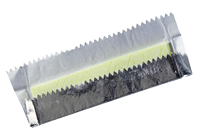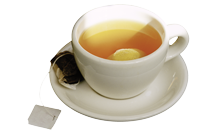Quit Tips
Don’t let Holiday stress win! Use the skills you have developed throughout your quit attempt so you don’t pick up tobacco again.





Talk with a counselor, get free Nicotine Gum, Patches and Lozenges, sign up for text quit tips, and join an online community of quitters at: nh.quitlogix.org
What Happens When I Quit?
Within 20 Minutes: Blood Pressure, pulse rate, and body temperature return to normal.
Within 12 Hours: Carbon monoxide levels in blood drop to normal.
Within 24 Hours: Your chance of heart attack has already decreased.
Within 48 Hours: Nerve endings start re-growing and your ability to smell and taste is enhanced.
Within 72 Hours: Bronchial tubes relax, lung capacity increases, and breathing becomes easier.
2 Weeks-3 Months after Quitting: Circulation improves, walking becomes easier, and lung function increases up to 30%.
1-9 Months after Quitting: Cilia (small hairs) reactivate in the lungs, increasing their ability to handle mucous, clean the lungs and reduce infection. Coughing, sinus congestion, fatigue and shortness of breath decrease. Your body’s overall energy level increases.
1 Year after Quitting: Excess risk of coronary heart disease is half that of a smoker.
5 Years after Quitting: Stroke risk is reduced to that of a non-smoker in 5 to 15 years after quitting.
10 Years after Quitting: Lung cancer death rate is about half that of a continuing smoker. Risk of cancer of the mouth, throat, esophagus, bladder, kidneys, and pancreas decrease.
15 Years after Quitting: Risk of coronary heart disease is that of a non-smoker.
Helpful Links
www.BecomeAnEX.com – EX is a free quit plan that will help you stop smoking. It’s not about why to quit. EX is all about HOW. The plan was created by medical experts and tested by real smokers. Or should we say, ex-smokers.
www.DrugFreeNH.org – A website designed to help individuals, families, and communities to get informed, get involved and get help! You will find information on prevention efforts, effects of alcohol and other drugs, guidance on recovery and treatment and links to programs in the Granite State . . . and more.
www.KillTheCan.org – A resource to quit Dip, Snuff, and Chewing Tobacco. An online community of people dedicated to quitting smokeless tobacco and to supporting each other’s struggles with a powerful and persistent addiction.
www.QuitNet.com – QuitNet’s web site is host to a thriving online community of thousands of smokers and ex-smokers who support each other with practical tips and celebrations of milestones. In addition to this supportive global community, the web site provides a suite of interactive tools and features that members can use 24 hours a day, seven days a week, for as long as they need.
www.Smokefree.gov – Smokefree.gov is intended to help you or someone you care about quit smoking. Different people need different resources as they try to quit. The information and professional assistance available on this web site can help to support both your immediate and long-term needs as you become, and remain, a non-smoker. Smokefree.gov allows you to choose the help that best fits your needs. You can get immediate assistance in the form of:
- An online step-by-step cessation guide,
- Local and state telephone quitlines,
- National Cancer Institute’s (NCI) national telephone quitline,
- NCI’s instant messaging service,
- Publications which may be downloaded, printed or ordered.
The web site was created by the Tobacco Control Research Branch of the National Cancer Institute.





